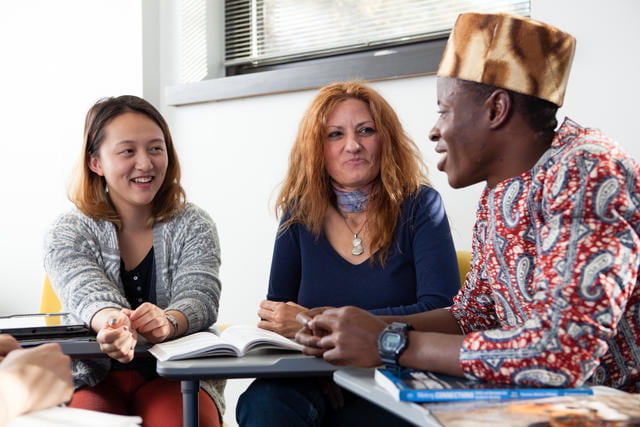Keep Teaching: An Interview with Katherine Samford, Language Institute

 Katherine Samford, Campus and Faculty Coordinator/Senior Lecturer, Language Institute
Katherine Samford, Campus and Faculty Coordinator/Senior Lecturer, Language Institute
Georgia Tech Professional Education
As colleges and universities everywhere began to shift in the face of the COVID-19 pandemic, faculty and staff in the Language Institute got a taste of teaching remotely two weeks earlier than the rest of campus. In just four days, they moved all of their intensive language courses into Canvas, learned how to leverage the existing functionality in Canvas and BlueJeans, and made sure that all of these classes still embodied best practices and accreditation standards.
The Language Institute’s campus and faculty coordinator, Katherine Samford, says when they realized they needed to go online just days before the start of their second eight-week intensive Spring session, and over a week earlier than the rest of Tech, it was all hands on deck. Faculty and staff banded together in their dedication to make sure the English language learners they worked with had everything they needed to succeed in a challenging environment.
“Many of the students taking our language courses are international students learning English to take the TOEFL exam or dip their toes into professional communication in English,” Katherine says. “As a team, we knew that we needed to focus on academic continuity, especially for students here on F1 visa who need to take courses to maintain their academic status. But just as importantly, we embraced the idea of stability as the core of our efforts. Georgia Tech should feel like home to our students, many of whom are far away from their families in this scary time, so we wanted to find ways to support this dual mission for our students as humans as well as students. We want them to know that we are here for them in multiple ways.”
When asked why she thinks the Language Institute was able to move their courses to a remote environment so quickly and successfully, she says overcommunicating and working as a team were crucial. They took action in the critical moments, made quick decisions, but always with the idea of academic continuity and best interests of their students top of mind. They tried to front-end as much of their work as possible in those few short days, staying closely connected and collaborative, regularly meeting virtually to learn the technologies, share experiences, and troubleshoot issues, which Katherine says the group continues to do. “Communicate and rely on your colleagues, stay connected, share practices, and be there to support each other. We’re in this together as a team,” she says.
Katherine says connecting through our common humanity is one way we can really help our students in this unprecedented situation: “Acknowledge the strangeness of this situation with your students. Remember that academic continuity does not equal business as usual, so give students opportunities to share their thoughts. And share your thoughts and apprehensions with your students, model humanity for them, and practice patience and kindness for students and yourself.”
In terms of teaching specifically, Katherine says that she and her colleagues have worked to “act small, teach small, and think big,” finding that sticking to technologies they and their students already know how to use, chunking course content into more granular lessons, and adjusting assessment, have helped them succeed so far. She notes, “you can still get the content and assessment in, just adjust to smaller chunks. We need to help students learn to learn in this environment, and what works face-to-face for us looks very different in an online model. Deep learning can absolutely still happen, and we are all learning together.” Katherine also recommends considering what attendance and participation mean in this context – is it relevant in the same way as it might have been when students are spread across the world and have different access to learning technologies and connectivity?
And finally, Katherine advises to have several back-up plans and to share those plans with your students. She front-loaded troubleshooting common technology issues when moving to remote instruction by creating guides for her students so they knew what to do if they lost access to the internet or could not join a synchronous discussion. She graciously shared this example with us as an example how to approach this with your students.




